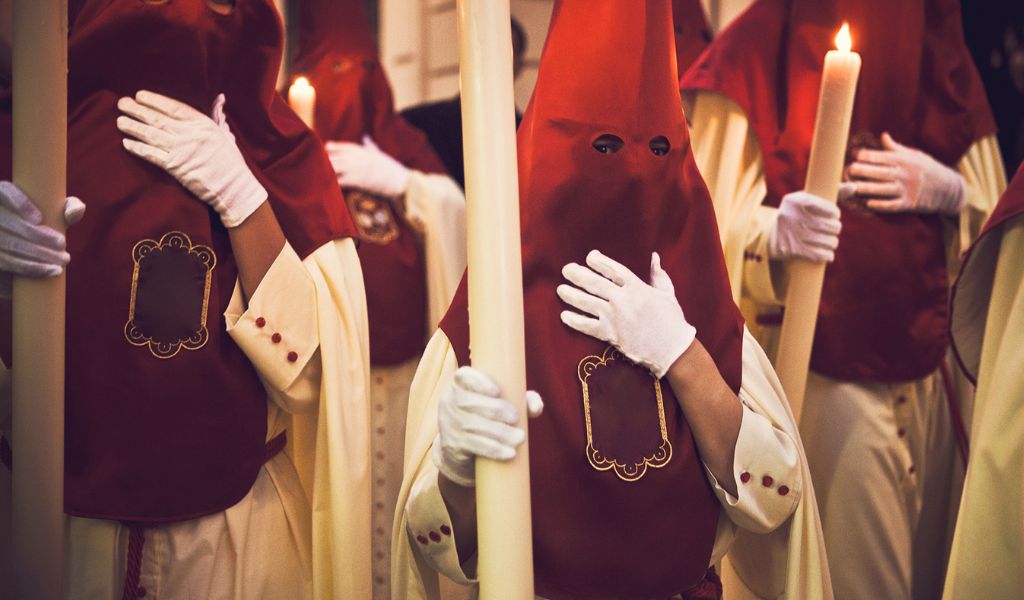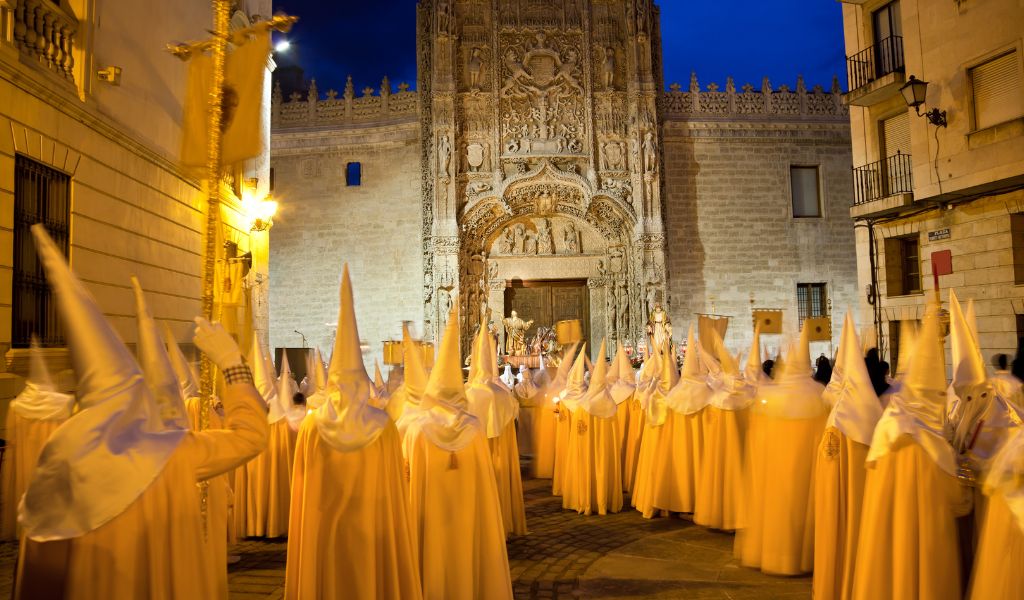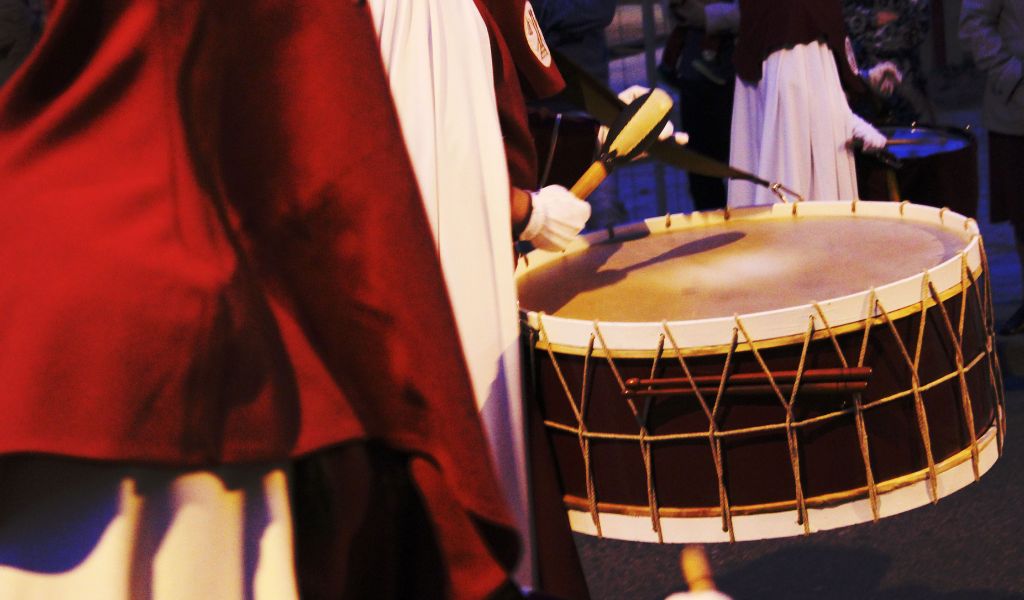Semana Santa, or Holy Week, is a time of celebration in Spain that is deeply rooted in both religious and cultural traditions.
For many Spaniards, this period marks the start of spring with its beautiful processions and unique customs.
Whether you’re looking to explore ancient churches or sample local delicacies, Semana Santa has something for everyone.
Introducing Semana Santa and its Significance in Spain
Semana Santa is celebrated in many countries around the world, but nowhere does it quite like Spain.
The celebrations date back to medieval times and are especially prominent in southern Spain, where Easter week processions can attract hundreds of thousands of spectators.
This celebration usually begins on Palm Sunday and culminates with Easter Mass on Sunday morning.
During this time period, Spanish cities such as Murcia, Seville, Granada, Malaga and Cadiz come alive as locals take part in religious observances and traditional rituals.
What’s more, several towns across Spain host spectacular festivals honouring Semana Santa.
These events often include outdoor concerts and activities for children of all ages.

Exploring the Traditional Celebrations of Semana Santa
From the iconic processions to religious rituals, there are many ways to experience the spirit of Semana Santa in Spain.
The most recognizable feature of Semana Santa are the elaborate parades known as “procesiones” which occur each day between Palm Sunday and Easter Sunday.
Thousands of people line the streets to watch these processions, which often feature brightly coloured flowers, musical bands and ornate floats carrying statues of Jesus or Mary through the towns.
Another significant event during Semana Santa is the “Viacrucis” or Way of The Cross procession that takes place on Friday night.
During this period, some churches also perform a traditional play known as a “Santo Entierro” or “Holy Burial”.
This performance is based on the story of Jesus Christ’s burial and resurrection and is a very moving experience for many Spaniards.
Finally, Semana Santa also marks the start of warmer temperatures in Spain, making it an ideal time to explore the country.
Whether you want to enjoy traditional cuisine, visit stunning cathedrals or sample local wines, Semana Santa has something for everyone.

Understanding the Symbolic Meaning Behind Semana Santa Customs
Above all else, Semana Santa is a deeply spiritual event in Spain and an important part of the Catholic faith.
The processions, rituals and other customs associated with this week are all symbolic reminders of Jesus’s ultimate sacrifice on the cross.
For many Spaniards, Semana Santa provides an opportunity to reflect on their spiritual journey and celebrate the resurrection of Christ.
By understanding the religious and cultural importance of Semana Santa in Spain, visitors can gain a better appreciation for this special time of year.
Visiting Popular Destinations for Experiencing Semana Santa Traditions
There are many popular destinations in Spain to explore the Semana Santa traditions.
In Seville, millions of tourists come each year to experience the beautiful processions and traditional events.
The city is also home to some of the biggest Easter ceremonies in the world and its stunning cathedrals often feature elaborate decorations during this period.
Other cities like Granada and Cadiz host vibrant festivals that include live music and other entertainment options.
And Murcia is known for its colorful pasos or floats which represent key scenes from Jesus’s life.
From religious rituals to ancient churches, there are plenty of opportunities for visitors to get a taste of Semana Santa in Spain.
No matter where you choose to visit Semana Santa in Spain, you are guaranteed to experience a memorable cultural celebration.

Learning About Local Cuisine During Semana Santa
During Semana Santa, most restaurants offer traditional dishes such as cochifrito (lamb chops), torrijas (bread pudding) and pestiños (honey-covered pastries).
These local delicacies often feature unique flavors that can’t be found anywhere else in the world.
Visitors are also encouraged to explore the many tapas bars and bodegas where they can sample a variety of Iberian wines.
By indulging in these delicious dishes, visitors can get a true taste of Spanish culture during Semana Santa.
Shopping For Souvenirs to Remember Your Trip to Spain During this Special Time of Year
Shopping is another great way to experience the Semana Santa traditions in Spain.
There are many souvenir stores to explore, offering everything from traditional Easter eggs and festive decorations to religious statues and collectible coins.
Visitors can also find a wide selection of handmade items like jewelry, pottery and clothing.
By purchasing these souvenirs, visitors can take a piece of Spanish culture home with them after their trip.
Tips for Planning a Successful Trip to Experience the Cultural Traditions of Semana Santa in Spain
When planning a trip to Spain during Semana Santa, it’s important to plan ahead.
Accommodation can be hard to come by during this time of year, so make sure you book your hotel well in advance.
The processions and other events are also very popular and can get crowded, so try to arrive early if you want a good spot.
Finally, don’t forget to dress appropriately – many churches have strict dress codes that must be followed.
By taking these steps before your trip, you will ensure an enjoyable experience when visiting Spain during Semana Santa.
Conclusion and final thoughts
Semana Santa is a deeply spiritual and meaningful event in Spain that provides an opportunity for reflection and celebration.
From religious rituals to traditional cuisine, there are plenty of ways to experience this special time of year.
Visitors can explore popular destinations such as Seville or Granada, sample local dishes like cochifrito or torrijas, and shop for souvenirs to take home with them.
With careful planning and consideration of the cultural traditions involved, anyone who visits during Semana Santa will have an unforgettable experience surrounded by Spanish culture and heritage.

